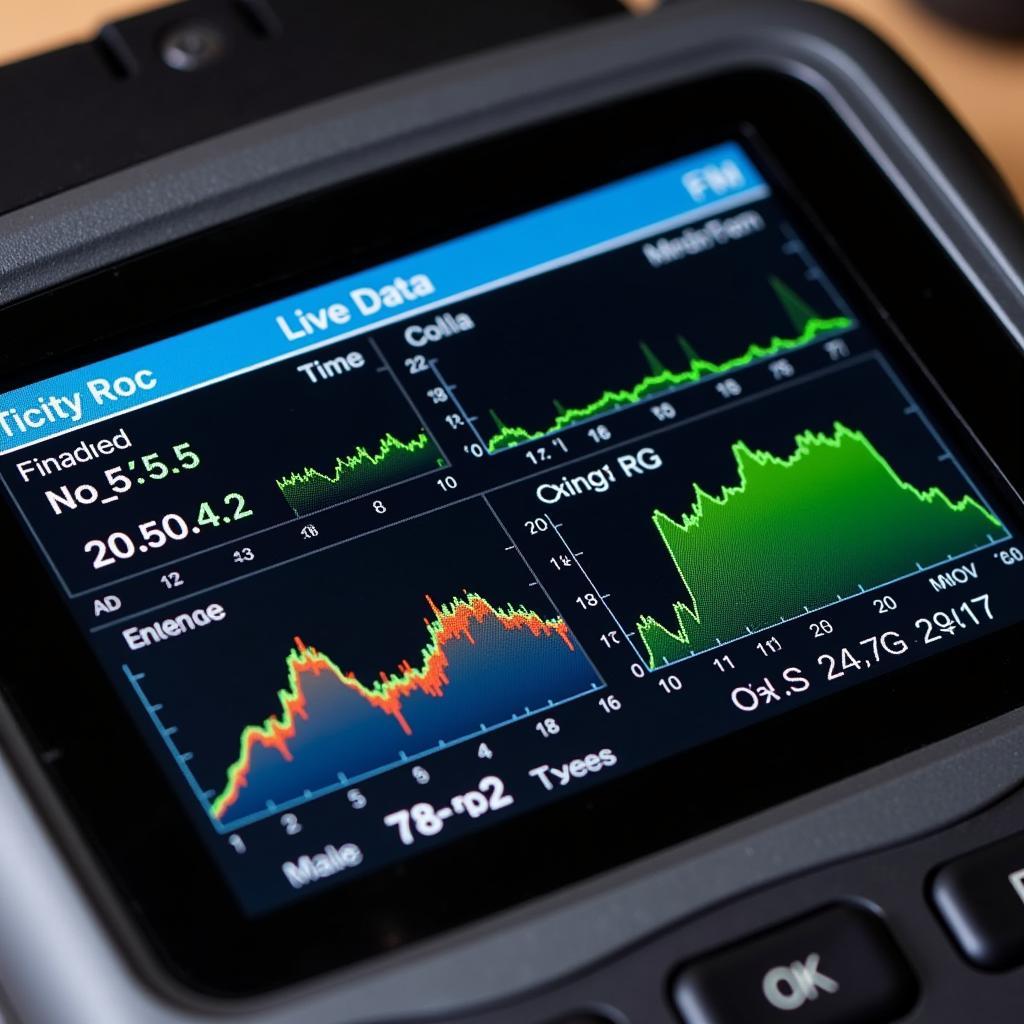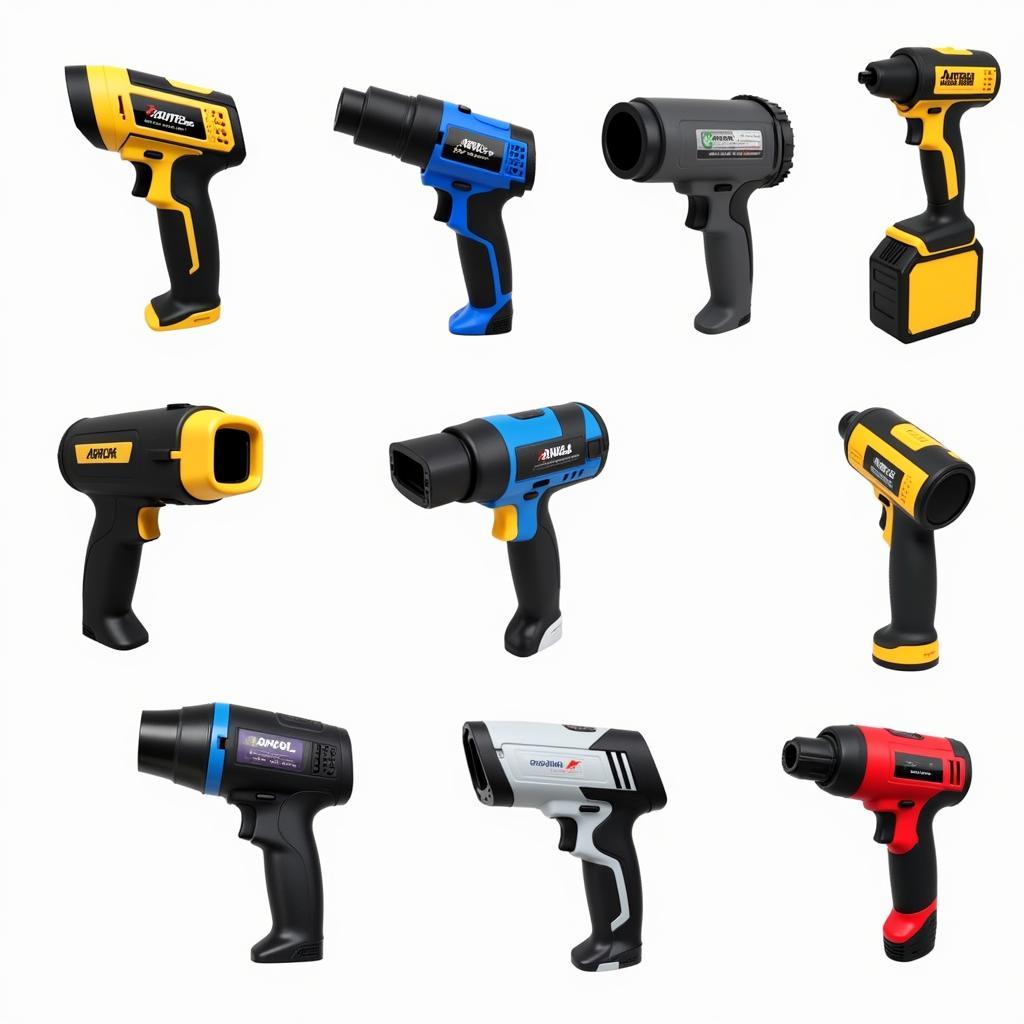Understanding your car’s health has never been easier than it is today, thanks to the advances in OBD II scan tools. These handy devices allow you to tap into your car’s computer system and read live data, providing valuable insights into its performance. But knowing how to interpret this data can be daunting for the average car owner. This article will guide you through the process of reading live data from OBD II scan tools, empowering you to diagnose problems or simply monitor your vehicle’s vital signs.
One of the biggest advantages of using automotive scanning tools is the ability to view live data. This real-time information can be incredibly useful for diagnosing problems and understanding how your vehicle is performing.
What is Live Data?
Imagine being able to see your car’s engine speed, temperature, and fuel consumption in real-time, just like your doctor monitors your heart rate and blood pressure. That’s essentially what live data offers. It’s a stream of information directly from your car’s various sensors, transmitted through the OBD II port and displayed on your scan tool. This data is dynamic, changing as you drive, and provides a live snapshot of your car’s inner workings.
Why is Reading Live Data Important?
Accessing live data with OBD II scan tools is crucial for several reasons:
- Accurate Diagnostics: Unlike stored codes, which only indicate past issues, live data shows you what’s happening in real-time. This is essential for identifying intermittent problems that might not trigger a check engine light.
- Performance Monitoring: Enthusiasts and performance tuners can use live data to monitor crucial parameters like boost pressure, air/fuel ratio, and ignition timing, allowing for precise adjustments and optimization.
- Preventive Maintenance: By tracking parameters like coolant temperature, oxygen sensor readings, and battery voltage, you can identify potential issues before they escalate into major problems.
- DIY Repairs: For the mechanically inclined, reading live data can provide valuable clues to diagnose and fix problems themselves, saving time and money on costly mechanic visits.
 OBD Scan Tool Displaying Live Data
OBD Scan Tool Displaying Live Data
How to Read Live Data from OBD II Scan Tools
Accessing and interpreting live data is a straightforward process:
-
Connect your OBD II scan tool: Locate your car’s OBD II port, typically found under the driver’s side dashboard. Plug in your scan tool and turn on the ignition (engine off for safety).
-
Access Live Data Mode: Navigate through your scan tool’s menu using the directional buttons or touchscreen. Look for options like “Live Data,” “Data Stream,” or “Monitoring.”
-
Select Parameters: Depending on the scan tool, you can choose specific parameters to monitor or view a pre-selected list. Focus on parameters relevant to the issue you’re troubleshooting or the information you want to track.
-
Interpret the Data: This is where things get interesting. Live data is presented in various formats – numerical values, graphs, or gauges. Use the scan tool’s manual to understand the units of measurement and normal ranges for each parameter.
-
Analyze and Diagnose: Compare the live data readings to manufacturer specifications or known good values. Look for any significant deviations or patterns that could indicate a problem.
Common Live Data Parameters and Their Significance
Here’s a glimpse into some common live data parameters and what they reveal about your car’s health:
-
Engine RPM (Revolutions Per Minute): Indicates engine speed. Fluctuations at idle or slow response to acceleration could signal issues with sensors, fuel delivery, or spark plugs.
-
Coolant Temperature: Monitors engine temperature. Abnormal readings might point towards a faulty thermostat, coolant leak, or problems with the cooling fan.
-
Oxygen Sensor (O2) Readings: Measure the amount of oxygen in the exhaust, indicating the air/fuel mixture’s richness or leanness. Fluctuations or out-of-range readings could suggest problems with the O2 sensor, fuel injectors, or air intake system.
-
Short Term Fuel Trim (STFT) and Long Term Fuel Trim (LTFT): Indicate how much the engine control unit (ECU) is adjusting the fuel mixture to maintain optimal combustion. Large positive or negative values might point to vacuum leaks, faulty sensors, or injector problems.
-
Vehicle Speed Sensor (VSS): Measures the vehicle’s speed. Discrepancies between the VSS reading and the speedometer could indicate a faulty sensor.
-
Manifold Absolute Pressure (MAP) Sensor: Measures the air pressure inside the intake manifold. Abnormal readings could be caused by a faulty MAP sensor, vacuum leaks, or restrictions in the air intake system.
-
Throttle Position Sensor (TPS): Monitors the position of the accelerator pedal. Inconsistent readings or a lack of response to pedal movement could suggest a faulty TPS sensor.
Tips for Effective Live Data Analysis
-
Consult Reliable Sources: Always refer to your vehicle’s service manual or reputable online resources for manufacturer specifications and acceptable data ranges.
-
Compare with Known Good Values: If possible, compare your car’s live data readings with those from a similar vehicle known to be in good working order.
-
Focus on Relevant Parameters: Don’t get overwhelmed by the sheer volume of data. Prioritize parameters related to the symptoms you’re experiencing or the system you suspect is faulty.
-
Log Data Over Time: Some scan tools allow you to log live data, enabling you to analyze trends and identify intermittent problems that might not be apparent from a single snapshot.
-
Seek Professional Help: If you’re unsure about interpreting the data or diagnosing the problem, don’t hesitate to consult with a qualified mechanic.
Conclusion
Learning How To Read Live Data From Obd Ii Scan Tools empowers you to delve deeper into your car’s health, understand its performance, and diagnose problems with greater accuracy. While interpreting live data requires some knowledge and practice, the insights gained are invaluable.
Whether you’re a car enthusiast looking to fine-tune your vehicle’s performance or a car owner wanting to stay ahead of potential problems, mastering the art of reading live data can be a game-changer. Remember, always refer to reliable sources for information, and don’t hesitate to seek professional help when needed.
For all your automotive scanning tool needs and expert advice, contact ScanToolUS at +1 (641) 206-8880 or visit our office located at 1615 S Laramie Ave, Cicero, IL 60804, USA.


Pingback: Understanding Voltage on O2 Sensor on Scan Tool - Car Scan Tool